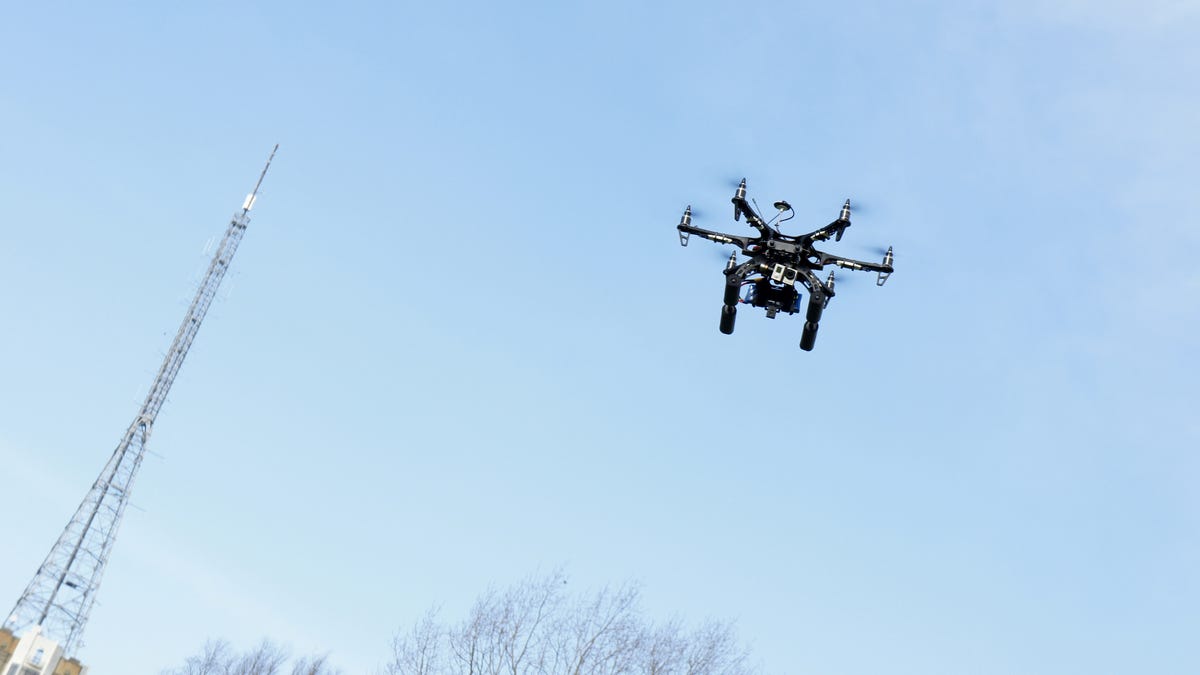FAA just made it easier to make money and save lives with a drone
The Small Unmanned Aircraft Rule Part 107 makes it easier for businesses to fly, but don't expect drones to start delivering packages just yet.

Part 107 of the FAA's Small Unmanned Aircraft Rule eases pilot requirements for drones used for commerical purposes such as tower inspection.
Come August, becoming a commercial drone pilot is going to be much simpler.
The US Department of Transportation's Federal Aviation Administration said Tuesday that it has finalized regulations for commercial use of small unmanned aircraft systems (sUAS) or "drones." The rules will make it easier for pilots to use drones for everything from structural or crop inspection to search-and-rescue operations to film production.
Until now, commercial sUAS pilots needed to petition for exemption from the FAA, which typically took months to get and required you to have a traditional manned pilot's license. The newly introduced Part 107 of the FAA Modernization and Reform Act of 2012 lifts this requirement as well as others for integrating sUAS into the national airspace.
Of course, while the FAA has eased the regulations, they aren't gone entirely. You're no longer required to have a pilot's license, but new sUAS pilots will need a remote pilot airman certificate that requires passing an aeronautical knowledge test and must be at least 16 years old.
Other Part 107 regulations include:
- Drone must be 55 pounds or less (25 kg) including weight of payload
- Drones must be registered with the FAA and available for inspection
- Line-of-sight flying only
- Use of first-person-view headset requires a second visual observer
- Maximum height is 400 feet (122 m) above ground, higher if withing 400 feet of a structure
- Maximum speed is 100mph (161kmph)
- No flying over people, under a covered structure or inside a stationary vehicle
- No piloting from inside a moving vehicle
- No flying at night
Though the new rule will open up a lot of commercial opportunities for non-hobbyist pilots, these regulations will likely still impede some uses. For example, limiting flights to daylight and twilight could mean grounding a search-and-rescue or firefighting operation or prohibit tracking nocturnal wildlife. It also means that Amazon's plans for drone deliveries or Walmart's for drone warehouse workers will still require more effort to get off the ground. The FAA does have plans to offer an online application process for waiving some restrictions case by case.
Part 107 does not change anything for hobbyists. Recreational pilots will still need to follow the FAA guidelines and register.
More details on Part 107 and the announcement can be found on the FAA's website.

